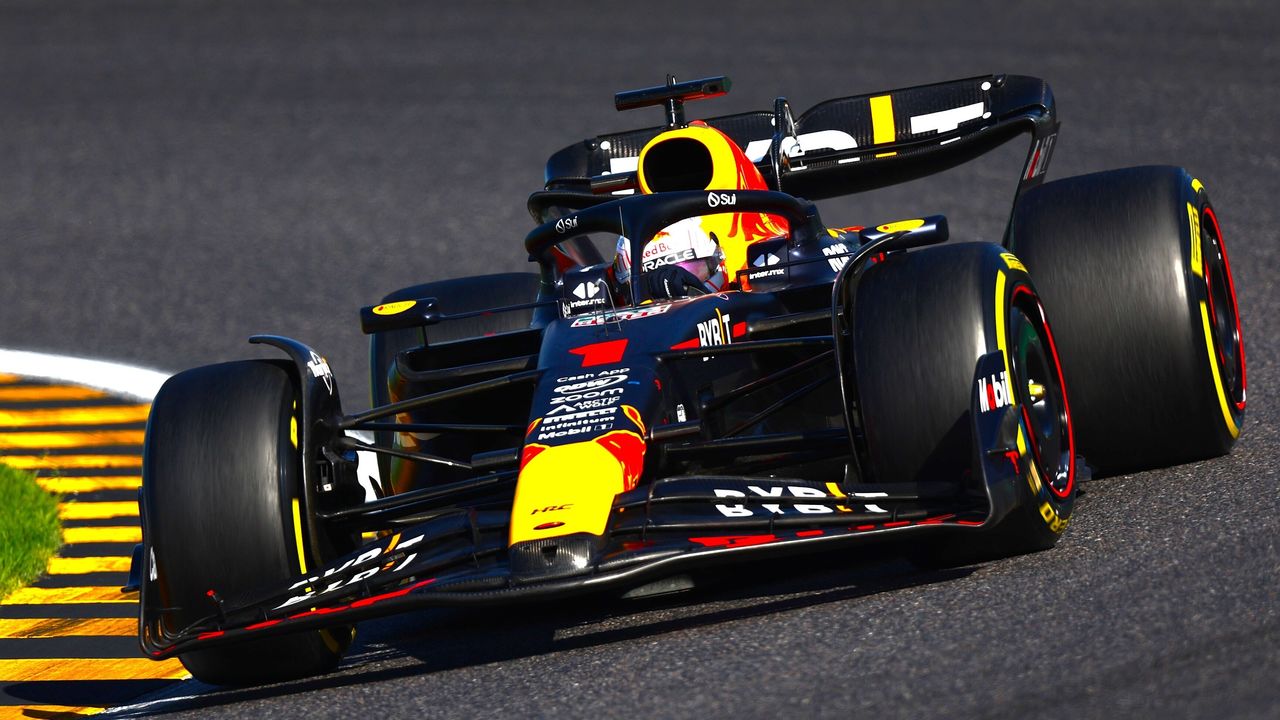
Back on Track: Honda to Return to F1 Racing in 2026
Sports Technology Economy- English
- 日本語
- 简体字
- 繁體字
- Français
- Español
- العربية
- Русский
About Face
Honda Motors surprised the racing world when it announced in October 2020 that it was withdrawing from Formula One racing at the end of the 2021 season. This spelled the end of the carmaker’s successful partnership with Red Bull Racing and Scuderia AlphaTauri. Aiming to go out with a bang, Honda unveiled its newly designed power unit, which helped propel Red Bull’s Max Verstappen to the World Driver’s Championship title.
It would end up not being a clean break, however, as the automaker’s subsidiary Honda Racing Corporation agreed to continue developing and manufacturing power units and provide technical support to the team through Red Bull’s newly formed powertrains unit. In the 2022 season, Red Bull won dual titles with its Honda-powered machines as Verstappen defended his driver’s title and the racing team finished atop the World Constructor’s Championship rankings.
The 2023 season is shaping up to be another successful run for Red Bull, with Verstappen and the racing team leading the standings with only a few dates remaining on the schedule. Honda was expected to complete its exit from F1 when its agreement with Red Bull ends in 2025, but in May of this year the automaker announced a new partnership with Aston Martin that will see it return in full to the highest class of international racing in 2026.
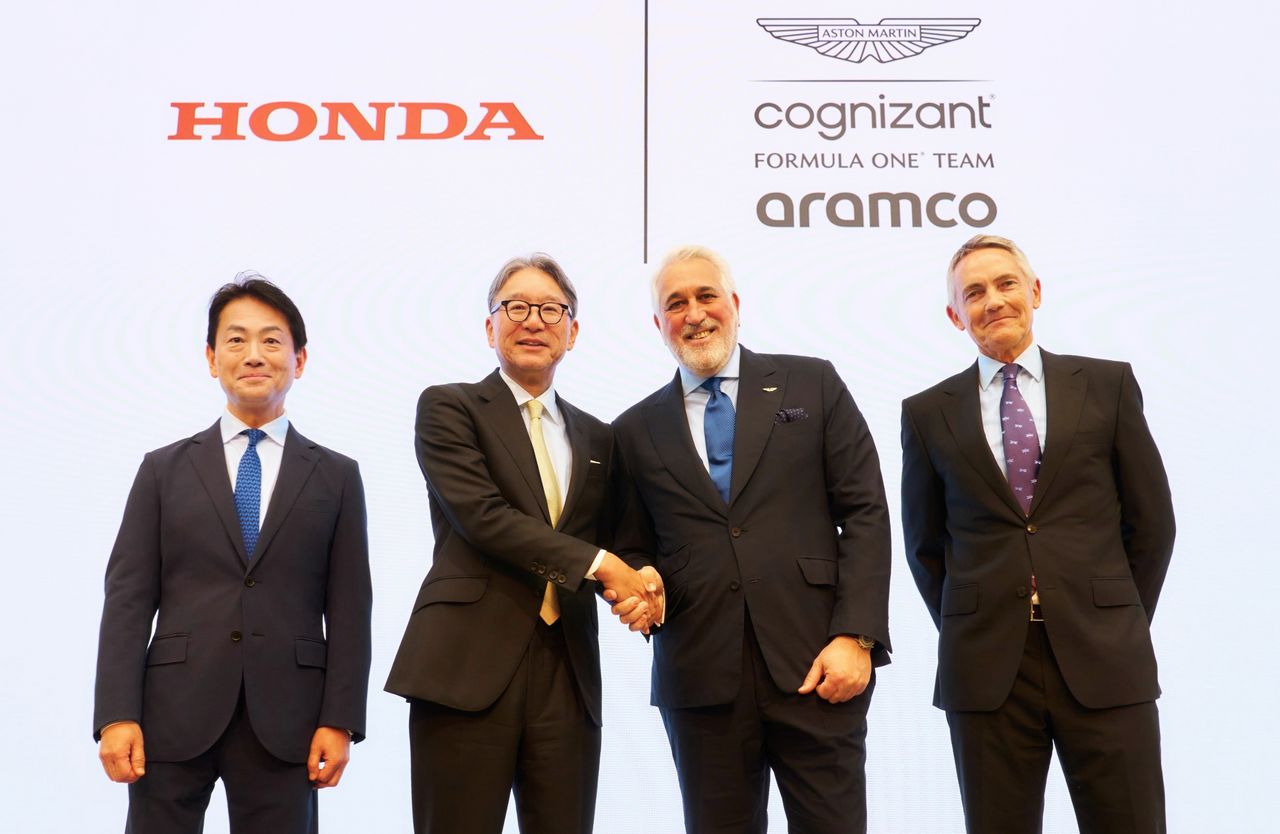
From left: Honda Racing President Watanabe Kōji, Honda Motor CEO Mibe Toshihiro, Aston Martin Chairman Lawrence Stroll, and Aston Martin Performance Technologies group CEO Martin Whitmarsh at a press conference in Tokyo on May 24, 2023, announcing the two sides’ F1 partnership. (© Honda)
The latest chapter in Honda’s on-again, off-again relationship with F1 racing began in 2020 when the carmaker initially announced it was withdrawing. Current Honda Racing President Watanabe Kōji, who in 2020 headed Honda’s Brand Communications division, offers insight into the company’s decision to leave Formula One.
“At that time, the term carbon neutral hadn’t become the buzzword it is today,” explains Watanabe. “But at Honda, we recognized that the coming push to reach net-zero emissions would have huge implications for the industry.” He points to the growing emphasis on fully electric vehicles in particular. “Switching focus to EVs represents a fundamental change in the capital structure of car companies. For us, this meant making major investments in things like battery production and the pace of motor development.”
Watanabe does not provide exact figures as to how much Honda expects to invest, but it is certainly on the order of tens to hundreds of billions of yen. Being slow out of the blocks with regard to electrification posed a catastrophic risk not just to Honda’s bottom line, but to the very survival of the company. Watanabe says that there was a current of fear running through the industry that spurred Honda and other manufacturers to shuffle their operations in order to bolster retained earnings, building a war chest for new development.
Honda had already sunk tens of billions of yen into the development and production of its F1 power units, but put the brakes on its racing program. Turning its attention to the pressing issue of carbon neutrality, it shifted financial resources and personnel—it had a team of F1 engineers working on electrification—toward research into power units and energy technology for fuel-cell vehicles and battery-powered EVs.
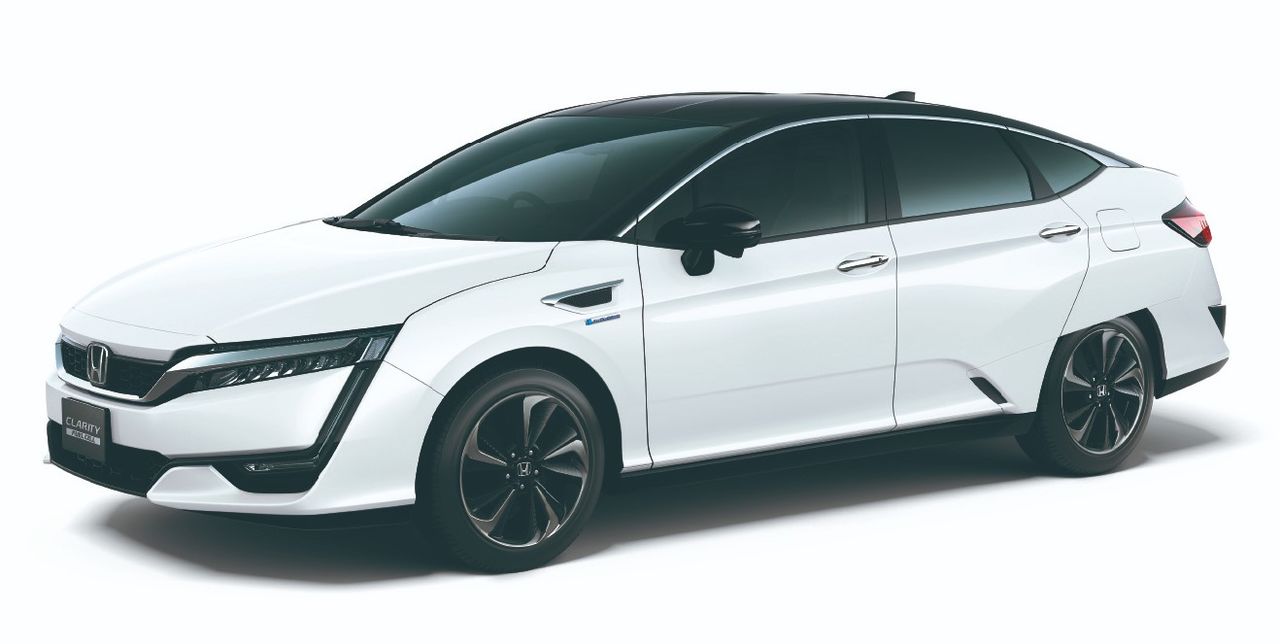
The Clarity Fuel Cell reigned as Honda’s “ultimate green car.” The model was produced until September 2021. (© Honda)
Honda’s decision to leave F1 and its subsequent about face has been seen by many industry watchers as blatant indecisiveness, criticism that Watanabe accepts. “In hindsight, it does appear as backtracking,” he explains. “However, at the time, we labored over the different issues and made the decision that we thought was best.”
F1 Return
Prompting Honda’s return to Formula One was an announcement by the governing organization, the Fédération Internationale de l’Automobile, of a slew of new regulations aimed at cars achieving net-zero emissions. These include switching to carbon-free fuel and increasing electric power to 50% of the output of hybrid engines. “We saw the rule changes as being in line with our aim of developing carbon-neutral technologies,” states Watanabe.
In plain terms, Honda is looking to apply the technologies it develops through its F1 program toward bolstering its EV lineup, with the firm aiming to go all-electric by 2040. This raises questions about the automaker’s approach to carbon-neutral fuels that are part of the rule changes. Although not included in the roadmap for achieving net-zero emissions in its auto business, research into this field would benefit Honda’s small-sized business jet operation and the development of a power train for the hybrid-electric vertical takeoff and landing (eVTOL) aircraft that it is currently working on.
With 2040 still a way off, Honda is certainly looking for ways to put advancements in its F1 power units to commercial use in the short term and further down the road. That said, though, it was widely known that major rule changes were in the offing for 2026 when Honda decided to withdraw in 2020, and I wonder whether the higher ups at the company felt a twinge at reversing their decision after just two and a half years.
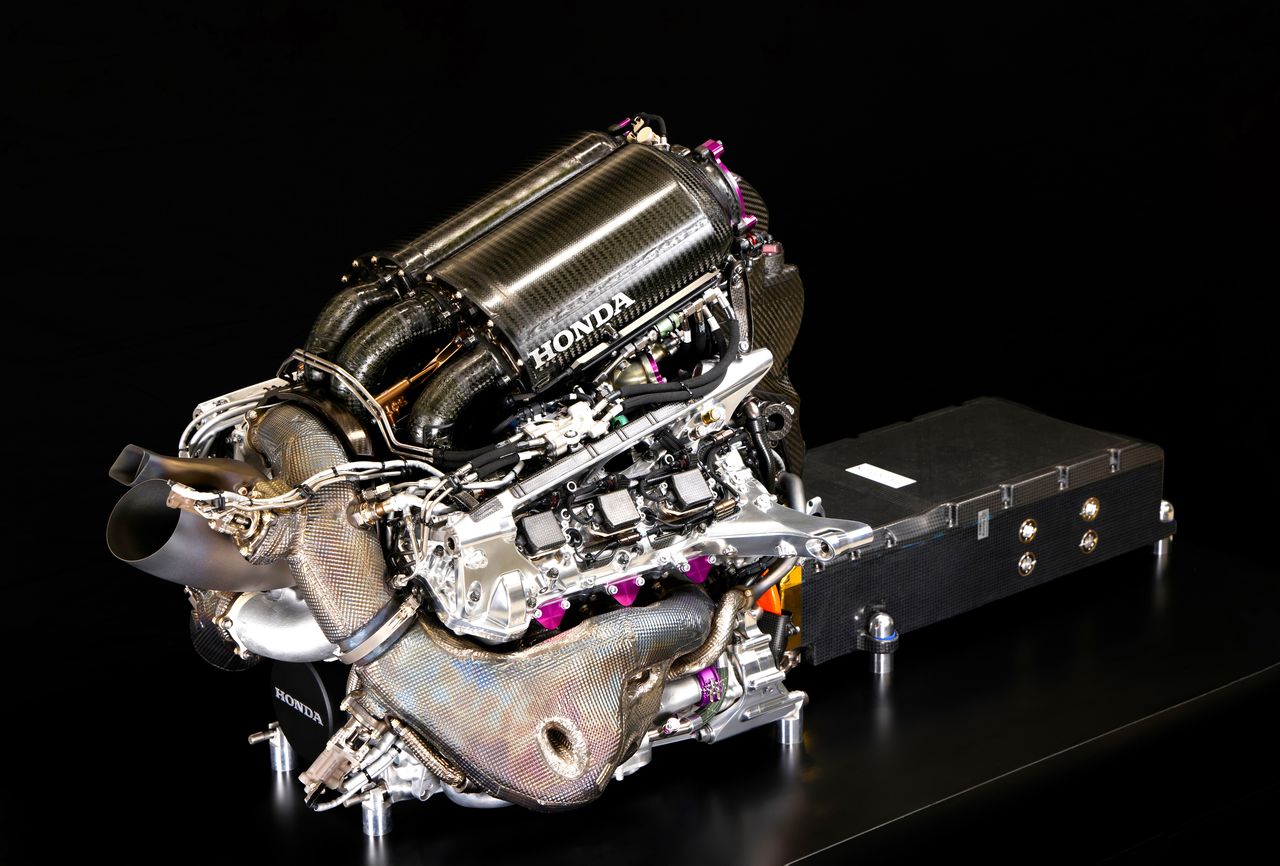
Honda’s hybrid power unit (combining an internal combustion engine and energy recovery system) has been core to Red Bull’s dominance over the last two F1 seasons. (© Honda)
Watanabe concedes that Honda executives initially dropped the ball when it came to the new F1 rules. “We had a rough idea of the regulation changes,” he says. “But our focus was on making major investments toward electrification, which prevented us from fully considering the implications of the new regulations for the company.”
Over the past three years Honda has transferred many of its F1 engineers to divisions working on production vehicles. Despite the challenges of rebooting its F1 program, the company still considered a return to the pinnacle of international racing as being in the realm of possibility. “It would be going too far to claim that we have a crystal-clear view of the way forward,” Watanabe declares. “But the blinders that previously hampered our vision are gone, enabling us to consider the path ahead.”
That path was likely influenced by Honda’s rapid progress in developing elemental electrification technologies like batteries and motors. Undoubtedly, the FIA setting the budget cap for power units at $130 million from 2026 onward was also a factor. The amount represents only a fraction of what Honda has invested to date, which certainly worked to buoy the carmaker’s confidence in returning to F1.
The F1 Money Game
Sweetening the deal even more for Honda is a change in its F1 contract. Previously, Honda had to cover developmental costs of its power unit in full, with no financial input from the racing teams utilizing the engines. On top of that, the firm had to pay to have the Honda logo displayed on the engine, a situation Watanabe describes as “flying in the face of common-sense business practices.”
Adding insult to injury, Honda as a power unit provider was excluded from receiving a share of the prize money, which the FIA pays out to racing teams according to the final season rankings. “The contract was lopsided in the extreme,” says Watanabe. However, Honda’s new deal with Aston Martin is a wholly different story.
Watanabe says that the British automaker will provide an undisclosed amount for use of power units and Honda will be exempt from paying a sponsor’s fee to display its logo. However, he insists that the reasons for partnering with Aston Martin go deeper than just the conditions of the contract. “The racing team is close behind Red Bull,” to which Honda will supply engines through 2025, he explains. “What’s more, it’s headed by owner Lawrence Stroll, who is passionate about F1. We couldn’t pass up an opportunity to work with such an exemplary group of people.”
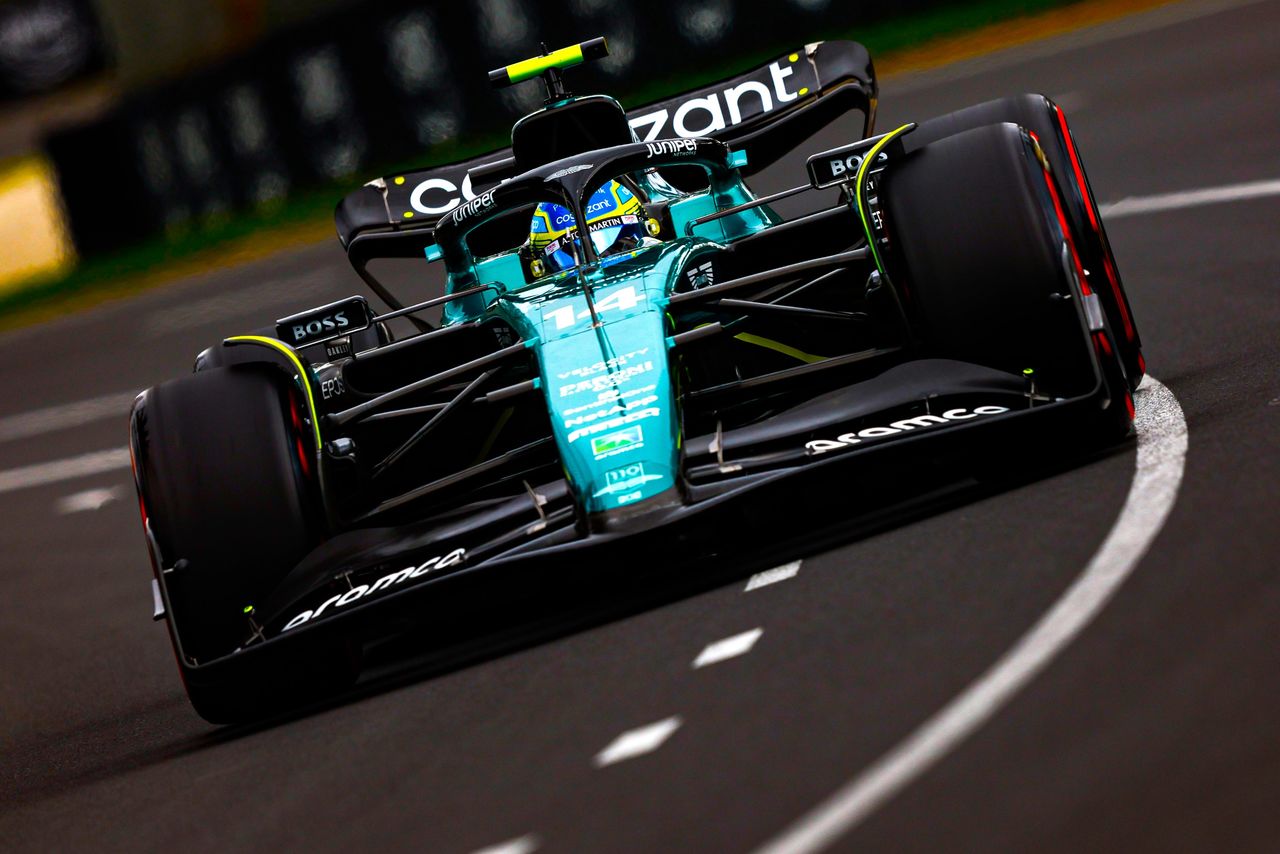
At the end of the 2023 racing season, Aston Martin stood fifth in the constructors’ championship rankings and team driver Fernando Alonso, a two-time world champion, was fourth in the drivers’ standings. (© Aston Martin)
Red Bull has dominated the circuit for the past few seasons, but Aston Martin has worked its way up the rankings and sits in fifth place at the end of the season. As an independent team, though, it is second behind Red Bull, a factor that certainly appealed to Honda.
“True, we’ve had a two-year blank compared to other manufacturers, who have been developing their cars at a fevered pitch,” says Watanabe. “But we’re working all-out to make up lost ground and expect to be in the running in our first year back.” Honda has laid claim to the “speed” title with its power units the last two seasons, and racing fans will be interested to see if it can ride this momentum to the podium in 2026.
(Originally published in Japanese. Banner photo: Max Verstappen drives the Oracle Red Bull Racing RB19 to victory at the Japan Grand Prix at the Suzuka Circuit in Mie Prefecture on September 24, 2023. It was the team’s thirteenth title of the season. © Getty Images/Red Bull Content Pool.)